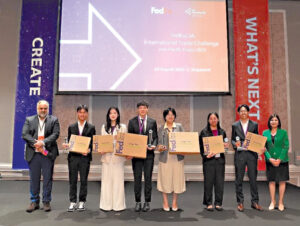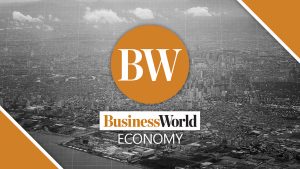IN BRIEF:
• The mining and metals industry is facing heightened operational complexity due to ageing mine sites, regulatory pressures, and the need for sustainable practices, which complicate productivity and increase costs.
• License to Operate (LTO) is becoming crucial as stakeholders demand greater returns, necessitating alignment with environmental, social, and governance (ESG) factors to secure necessary permits and build community trust.
• Sustainability commitments are facing achievement and measurement challenges, while emphasizing community partnerships and technology for effective sustainability monitoring.
The mining and metals industry is entering a new phase of uncertainty, with operational complexity identified as the primary risk for 2026, as highlighted in the EY Top 10 Business Risks and Opportunities survey, which gathered insights from 500 senior executives in the sector globally. This article discusses four of the top risks identified in the survey.
OPERATIONAL COMPLEXITYThe growing complexity in mining operations stems from ageing mine sites and the need to replace old mines to meet rising demand. As mines go deeper and ore grades decline, challenges such as geotechnical issues and water management become increasingly intricate throughout the mine’s lifecycle. In the Philippines, the implementation of regulations related to environmental, social, and governance (ESG) factors, including watershed management and biodiversity conservation, adds another layer of complexity, although highly necessary, requiring companies to adopt compliance measures. This heightened complexity not only impacts productivity but also raises operational costs and shifts expectations regarding brownfield expansions and the initiation of new mines.
Predictability is essential for maintaining investor confidence, securing capital, and ensuring strategic flexibility. Therefore, rethinking mine design and operations to simplify processes while adhering to regulations is crucial.
LICENSE TO OPERATELicense to Operate (LTO) is becoming increasingly significant as external stakeholders, including governments and local communities, demand greater returns from mining assets. This shift is driven by rising nationalism and tightening government budgets, compelling companies to reassess their operational strategies. The recent passing of the Enhanced Fiscal Regime for Large-Scale Metallic Mining Act exemplifies this trend.
As the focus on LTO intensifies, it becomes clear that both LTO and ESG factors play a crucial role in the permitting process. These elements are increasingly influenced by national objectives, making it essential for mining companies to align their practices with regulatory priorities to secure necessary approvals. Locally, LTO and ESG are intertwined as regulators and the industry work to address past environmental and social issues that have continued to hound the industry. Regulations aimed at biodiversity conservation and aligning the Social Development Management Program with the Sustainable Development Goals continue to position ESG as a key driver of LTO.
Miners have the opportunity to build trust with stakeholders by prioritizing sustainable and ethical practices over mere compliance. By doing what is right, companies can foster stronger relationships and enhance their reputation within the communities they serve. Ongoing collaboration with local communities is vital for success, as engaging with stakeholders not only addresses their concerns but also creates a more sustainable and mutually beneficial relationship.
ATTRACTING A SKILLED WORKFORCEThe global mining sector continues to grapple with a significant challenge: a reputation that hampers its ability to attract a diverse and skilled workforce. As the industry evolves, addressing this issue is essential for future success. Companies must focus on mapping talent and predicting workforce needs, transitioning to long-term workforce planning to align with broader mine strategies. This proactive approach will enable organizations to anticipate and meet their staffing requirements effectively.
Additionally, there is a pressing need to reevaluate the employee value proposition (EVP). By establishing clear career pathways, mining companies can make the industry more appealing to potential employees. Embracing technology is also crucial; implementing tools that support onboarding and just-in-time learning can help build specialized skills, enhance safety culture, and optimize production processes. By investing in the workforce and fostering a positive work environment, mining companies can improve their reputation and secure the talent needed to thrive in a competitive landscape.
ACHIEVING SUSTAINABILITY GOALSAs the mining industry faces increasing pressure to adopt sustainable practices, leading companies have set ambitious goals to become nature-positive by 2030. However, measuring progress toward these targets remains a significant challenge. In the Philippines, the voluntary adoption of the Towards Sustainable Mining (TSM) Protocols by the Chamber of Mines and its members demonstrates the industry’s strong commitment to sustainability, particularly in areas related to communities and people, climate change and environmental impact.
A crucial aspect of achieving sustainability goals lies in forming strong partnerships with local communities, whether indigenous or not, which is also expected under the TSM Protocols. These collaborations not only help miners meet their sustainability objectives but also play a vital role in maintaining their LTO, as also mentioned above. To enhance the measurement and monitoring of sustainability efforts, the increased use of digital tools and data analytics is essential. By leveraging technology, mining companies can gain better insights into their environmental and social impact and track their progress more effectively.
ENHANCING RESILIENCE FOR LONG-TERM SUCCESSAs the mining and metals industry navigates this complex landscape, it must prioritize operational efficiency, stakeholder engagement and license to operate, workforce development, and sustainability. By addressing these interconnected challenges, companies not only enhance their resilience but also position themselves for long-term success in an increasingly demanding environment.
This article is for general information only and is not a substitute for professional advice where the facts and circumstances warrant. The views and opinions expressed above are those of the author and do not necessarily represent the views of SGV & Co.
Katrina F. Francisco is a Sustainability Partner of SGV & Co.


















